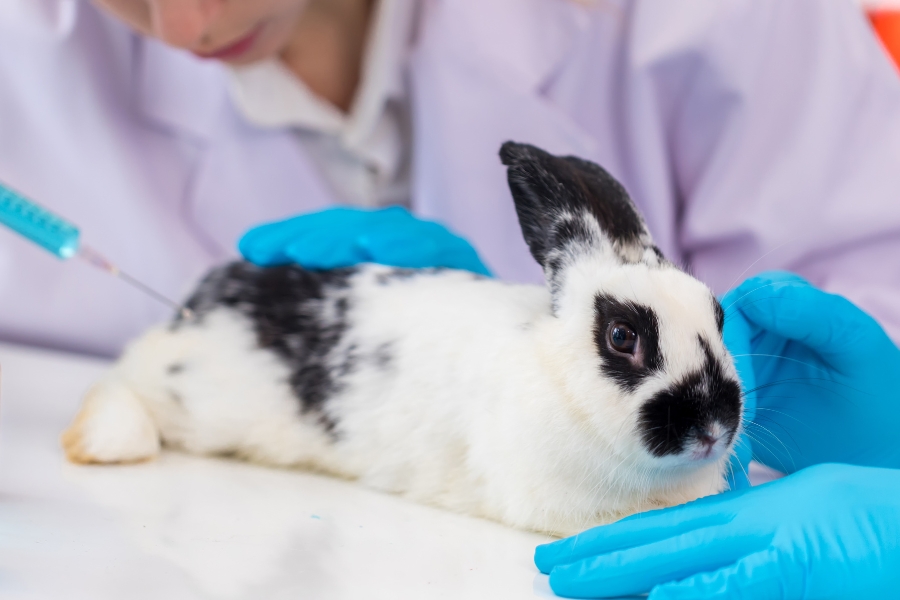Air fryers have taken the world by storm, offering a healthier way to enjoy crispy, golden meals without drowning your food in oil.
But have you ever considered whether your air fryer is truly healthy?
Many popular models contain harmful chemicals and coatings that can leach into your food during cooking.
Let’s dive into what to look out for and explore some of the best low-tox air fryers available in Australia.
10 Harmful Substances to Avoid in Air Fryers
When choosing an air fryer, you need to be aware of certain toxic substances that can compromise your health. So let’s break it down…
1. PTFE (Polytetrafluoroethylene) / Teflon Coatings
What it is: PTFE is a synthetic chemical used in non-stick coatings like Teflon.
Why it’s toxic: When heated above 260°C, PTFE can release toxic fumes that may cause flu-like symptoms in humans and are lethal to birds. It’s also a ‘forever chemical’ that stays in your body.
What to look for: Opt for air fryers labelled as “PTFE or Teflon free” or with ceramic, stainless steel, or other non-toxic coatings.
2. PFOA (Perfluorooctanoic Acid)
What it is: A chemical used in the production of non-stick coatings like Teflon.
Why it’s toxic: PFOA has been linked to health issues such as cancer, hormone disruption, and developmental problems. While phased out in many countries, it may still be found in some products.
What to look for: Choose air fryers with “PFOA-free” certification to avoid this chemical.
3. BPA (Bisphenol A)
What it is: A chemical found in some plastics used for baskets, lids, and other components.
Why it’s toxic: BPA is an endocrine disruptor that can mimic oestrogen, potentially leading to hormonal imbalances, fertility issues, and other health concerns.
What to look for: Ensure the air fryer is labelled “BPA-free”, particularly for components that come into contact with food.
4. Phthalates
What it is: A group of chemicals used to make plastics flexible and durable.
Why it’s toxic: Phthalates are linked to hormone disruption, reproductive issues, and developmental problems in children.
What to look for: Avoid air fryers with plastic parts that could contain phthalates. Opt for stainless steel or other safe materials for food-contact surfaces.
5. Melamine
What it is: A type of plastic sometimes used in food-related products.
Why it’s toxic: Melamine can leach harmful chemicals when heated to high temperatures, posing kidney and other health risks.
What to look for: Avoid air fryers with melamine components and choose models with stainless steel or ceramic interiors.
6. Lead and Cadmium
What it is: Heavy metals are sometimes found in paint, enamel, or coatings on air fryer parts.
Why it’s toxic: Lead and cadmium exposure can cause neurological, developmental, and organ damage.
What to look for: Verify that the air fryer is certified lead and cadmium-free.
7. Flame Retardants
What it is: Chemicals added to plastics and electrical components to reduce fire risks.
Why it’s toxic: Flame retardants, such as PBDEs (polybrominated diphenyl ethers), can leach into the environment and disrupt hormones, fertility, and development.
What to look for: Choose appliances that comply with strict safety standards without using toxic flame retardants.
8. Polycarbonate Plastics
What it is: A type of plastic often used in appliance manufacturing.
Why it’s toxic: Polycarbonate can release harmful chemicals like BPA or BPS when exposed to heat.
What to look for: Look for air fryers made with stainless steel or food-safe, heat-resistant materials.
9. PVC (Polyvinyl Chloride)
What it is: A plastic sometimes used in handles, cords, or seals.
Why it’s toxic: PVC can release harmful dioxins, particularly when heated. These are linked to cancer, immune issues, and hormone disruption.
What to look for: Opt for air fryers with PVC-free components or alternative materials like food-grade silicone.
10. Non-Stick Foil or Accessories
What it is: Cheap accessories included with air fryers may have unknown non-stick coatings.
Why it’s toxic: These may contain unregulated chemicals that degrade with heat.
What to look for: Avoid bundled non-stick accessories unless they are explicitly labelled as free from PTFE, PFOA, and other harmful chemicals.
The good news is there are plenty of lower tox air fryers on the market nowadays, certainly a lot more than their used to be a few years ago.
Some are of course better than others, and as you can see from the above info in this post, you may not be able to tick off all the boxes, BUT… we found plenty that are soooo much better (the glass ones are our favourite).
For a list of even more low tox air fryers, tap on the button below 👇🏻
We hope that gives you a good idea of what to look out for when choosing your next air fryer.
Of course, if we missed any, feel free to pop your suggestions in the comments so we can all check them out.
Much love,
Jo & Tracey x















Leave A Comment